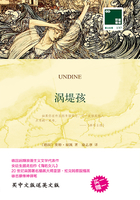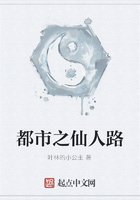Miss Martha took to wearing her blue-dotted silkwaist behind the counter. In the back room she cooked amysterious compound of quince seeds and borax. Ever somany people use it for the complexion.
One day the customer came in as usual, laid his nickel onthe showcase, and called for his stale loaves. While MissMartha was reaching for them there was a great tootingand clanging, and a fire-engine came lumbering past.
The customer hurried to the door to look, as any one will.
Suddenly inspired, Miss Martha seized the opportunity.
On the bottom shelf behind the counter was a poundof fresh butter that the dairyman had left ten minutesbefore. With a bread knife Miss Martha made a deep slashin each of the stale loaves, inserted a generous quantity ofbutter, and pressed the loaves tight again.
When the customer turned once more she was tying thepaper around them.
When he had gone, after an unusually pleasant littlechat, Miss Martha smiled to herself, but not without aslight fluttering of the heart.
Had she been too bold? Would he take offense? Butsurely not. There was no language of edibles. Butter wasno emblem of unmaidenly forwardness.
For a long time that day her mind dwelt on the subject.
She imagined the scene when he should discover her littledeception.
He would lay down his brushes and palette. There wouldstand his easel with the picture he was painting in whichthe perspective was beyond criticism.
He would prepare for his luncheon of dry bread andwater. He would slice into a loaf—ah!
Miss Martha blushed. Would he think of the hand thatplaced it there as he ate? Would he—
The front door bell jangled viciously. Somebody wascoming in, making a great deal of noise.
Miss Martha hurried to the front. Two men were there.
One was a young man smoking a pipe—a man she hadnever seen before. The other was her artist.
His face was very red, his hat was on the back of hishead, his hair was wildly rumpled. He clinched his twofists and shook them ferociously at Miss Martha. At MissMartha.
“Dummkopf!” he shouted with extreme loudness; andthen “Tausendonfer!” or something like it in German.
The young man tried to draw him away.
“I vill not go,” he said angrily, “else I shall told her.”
He made a bass drum of Miss Martha’s counter.
“You haf shpoilt me,” he cried, his blue eyes blazing behindhis spectacles. “I vill tell you. You vas von meddingsome oldcat!”
Miss Martha leaned weakly against the shelves and laidone hand on her blue-dotted silk waist. The young mantook the other by the collar.
“Come on,” he said, “you’ve said enough.” He draggedthe angry one out at the door to the sidewalk, and thencame back.
“Guess you ought to be told, ma’am,” he said, “whatthe row is about. That’s Blumberger. He’s an architecturaldraftsman. I work in the same office with him.
“He’s been working hard for three months drawing aplan for a new city hall. It was a prize competition. Hefinished inking the lines yesterday. You know, a draftsmanalways makes his drawing in pencil first. When it’s donehe rubs out the pencil lines with handfuls of stale breadcrumbs. That’s better than India rubber.
“Blumberger’s been buying the bread here. Well, today—well, you know, ma’am, that butter isn’t—well,Blumberger’s plan isn’t good for anything now except tocut up into railroad sandwiches.”
Miss Martha went into the back room. She took off theblue-dotted silk waist and put on the old brown serge sheused to wear. Then she poured the quince seed and boraxmixture out of the window into the ash can.















